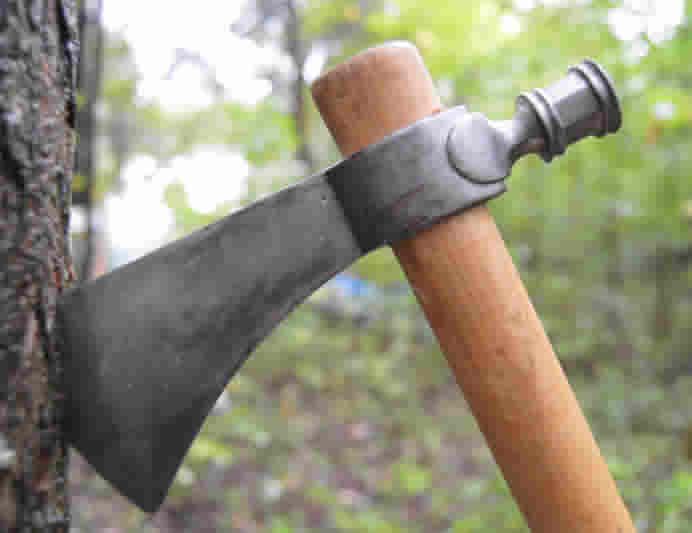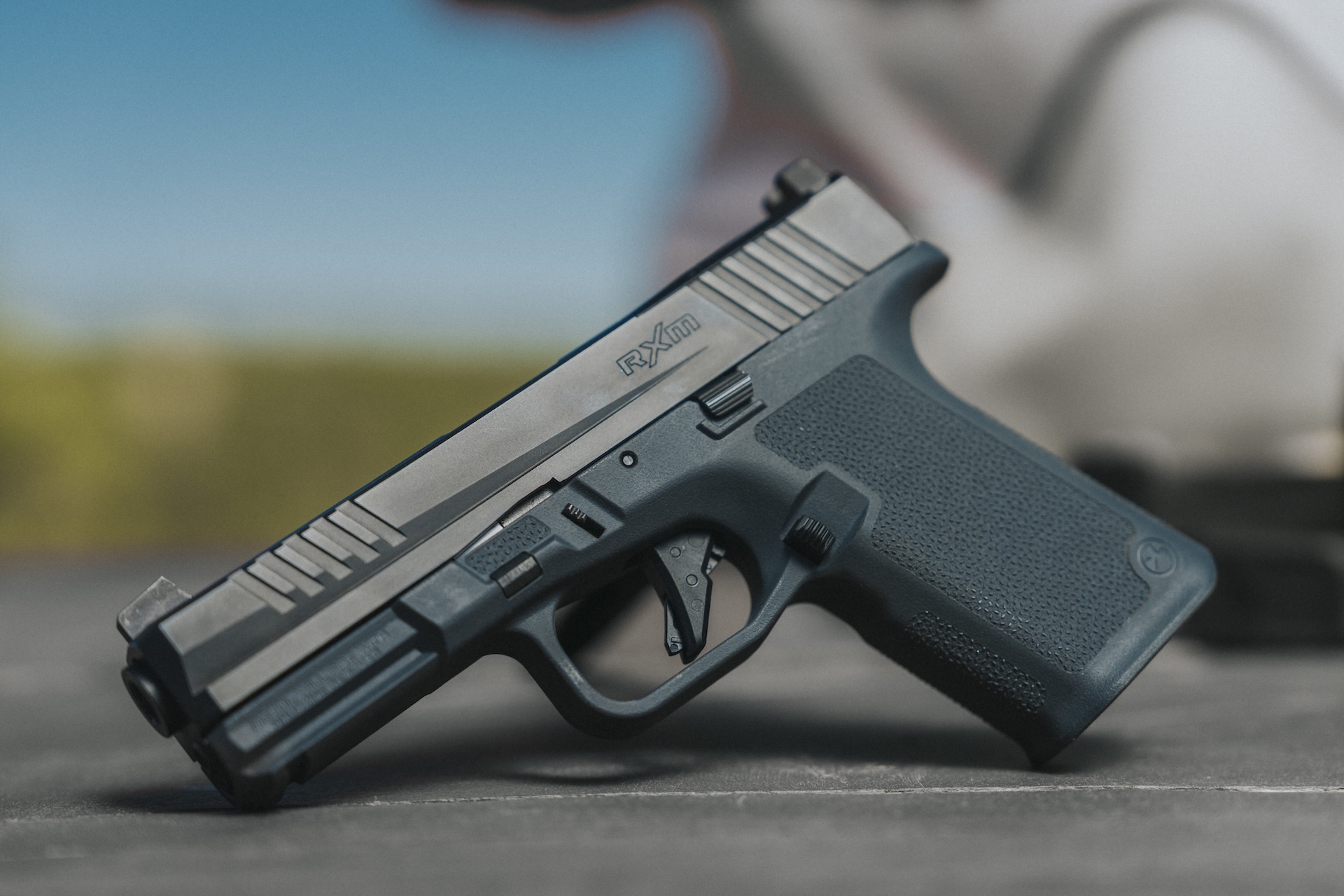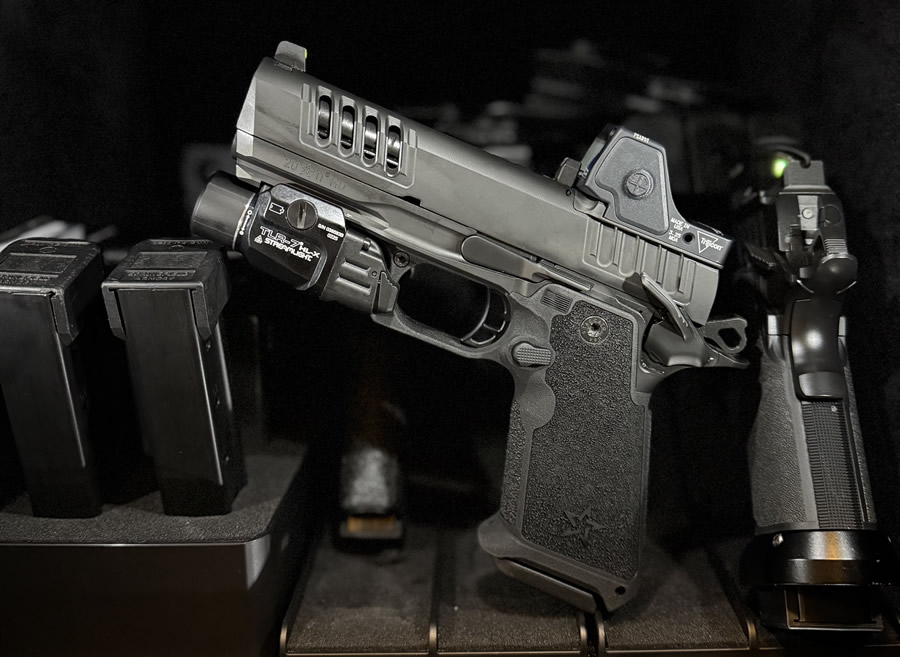Flintlocks weren’t the only weapon at the disposal of early American settlers – Indian tomahawks had a place and were even part of Revolutionary War soldiers’ fighting kit.
I have always loved tomahawks. I got my first one 30 years ago. Dixie Gun Works had a sale on hand-forged heads for the ridiculously low price of $6, as I recall. I bought one and fitted a sturdy hardwood handle to it.
It is no work of art, but it does look like something you’d expect a frontier blacksmith to have hammered out in 1730.
The project was so much fun in the doing and the telling, and the final product so practically useful, I became convinced my 8-year-old son wasn’t too young to make his first tomahawk.
You can’t get too much more American than the tomahawk unless you’re eating apple pie at a baseball game. The name itself has its origins in the language of the Algonquian Indians as interpreted by the ears of the early English colonists, John Smith of Pocahontas fame among them.
The colonists identified the word with their own iron-headed hatchets, but exactly what the Indians meant by it in the early 1600s is hard to pin down with certainty. Regardless of its initial Indian definition, by the mid-1700s a tomahawk was understood by all parties to be a light, one-handed ax (hatchet) with a straight wooden handle and a head with a blade on one side and a hammer, spike or pipe bowl for smoking tobacco on the other.
The stone-bladed hatchets made and used by the Indians in the early colonial period were completely gone by then, thanks to the enterprising European traders who introduced metal heads of iron and brass.
When metal tools replace stone ones, you’re talking about a vast technological leap for a society. It certainly made the tomahawk much more practical as a close combat weapon, and they were commonly used in this capacity, as well as general camp tools, by Indian and settler alike.
In fact, at the outbreak of the American Revolution, the Continental Congress specified that patriots answering the call to arms equip with either a tomahawk or sword in addition to a musket.
Of the two weapons, the tomahawk is the more savage and frightening, capable of delivering grievous, deep, bone splintering wounds. You can imagine that the average British Redcoat regular serving in the Colonies during the French Indian War or trying to crush the American rebellion after 1775 was no fan of the tomahawk.

BECAUSE IT’S LIGHT (one to two pounds), the tomahawk was
sometimes used as a thrown weapon. Sticking it blade first in the target
requires an understanding of the time and distance the weapon takes to make
a full rotation in flight when thrown at a given speed. It also works better with a weapon correctly matched to the thrower’s height and strength.
The technique is deceptively simple. Take five or six paces from your target. Face it and raise the tomahawk over your shoulder, gripping it by the end of the handle like it was a hammer.
Swing down through the target and release. If it hits handle first, you are
too close. Take a step back. If it hits on the top of the head, you are too far away from your target and need to take a step closer. Once you try it, you realize the huge amount of practice it must have required to effectively throw a tomahawk in combat at a moving target; and even more so if the thrower was also moving.
It speaks volumes about the martial talents of the Indian warrior.

UNLIKE WHITE SETTLERS, the Indians attached ceremonial and social
importance to the tomahawk. They decorated them to reflect the owner’s identity and status or to express tribal intentions at gatherings.
Sometime at the start of the 1700s, a lightning bolt of inventive genius struck in Europe and one of the New World’s all-time-best product ideas was born. Someone got the notion to hollow out the hammer end of the normal trade tomahawk into a pipe bowl and fit it to a handle with a hole drilled its full length.
The resulting pipe-tomahawk became immediately popular with the Indians, who used
them to smoke for enjoyment and in formal rituals and diplomatic matters.
They eventually became important symbols of authority among the tribal chiefs. The hollow handled pipe tomahawks were not quite as strong as the solid versions, but they could be, and often were, employed for battle as well as mundane field craft
chores by Indians and frontiersmen.
I FOUND THE perfect beginner tomahawk project for my son while attending the Contemporary Longrifle Association (longrifle.com) annual meeting held every August in Lexington, Kentucky.
This big gathering of artist-artisans fills a hall at the Rupp Arena and is the best place on earth to see original creations of American 18th and early
19th century guns, accoutrements and material culture made just like they were back then. Fortunately, they also have plenty of raw, semi-finished and finished materials and parts resources for amateurs of all skill levels to experiment with.
It was at the R.E. Davis Company booth that I found exactly what I was looking for. Based in Woodville, Ohio, R.E. Davis Company (redaviscompany.com) has been one of the leaders in manufacturing historical muzzleloading firearm components for 40 years.
Their core competency is sand and investment casting. They make their own locks, triggers, triggerguards, ramrod thimbles (pipes), toeplates, sideplates, thumb pieces and buttplates, and even a few great kits including a French trade gun. Their line of products has expanded over the years to include things related to 18th and early 19th century American frontier history, like kid’s toys, books, videos, posters and now tomahawk parts!
They have eight different styles of authentic pipe heads in small (less than 6 inches), medium (6 to 7 inches), and large (over 7 inches) sizes, either copied
from or based on examples in use during the colonial and early republic periods. Most heads were available in your choice of three different steels or brass. Steel heads cost $30 to $33 and brass heads cost from $15 to $37.
Brass is too soft to hold an edge, but its beauty and resistance to corrosion
made it appealing to the Indians. Sometimes an iron or steel cutting edge was inlet and soldered to the front of a brass head to give it practical value for light chopping.
R.E. Davis also sells these edges in steel for $9 if you’re inclined to try this somewhat more advanced bit of metalwork. The heads offered in steel can be had in 8620, 4140 or 6150 steel.
There’s no difference in price. The 8620 is a mild steel that’s easily filed,
finished and engraved but somewhat less durable than the other two.
If you were planning to use your tomahawk for display, this steel would be the best choice because it’s easiest to work with.
Forty-one-forty is a tool steel that’s a little harder to work but simple to
heat-treat into a hard working tool.
The third kind, 6150, is also a tool steel, capable of great durability when
properly heat-treated.
They have three different sizes of curly maple handles ranging from $15 for an 18-inch solid (undrilled) handle to $32 for a premium curly maple 24-inch handle drilled its full length for use as a pipe.
As a parent, I was really pleased R.E. Davis offered their pipe heads and handles undrilled. I don’t really care what anyone else smokes as long as they aren’t operating a vehicle or a nuclear reactor, but I discourage my children from such activities.
I am not giving a preteen a pipe of any kind. Undrilled, the bowl becomes a nice solid hammer head. The casting of the head I examined was quite smooth with the details well rendered. The one I selected for my son, along with an 18-inch solid handle, produced a very attractive finished tomahawk that weighed just under a pound. Unlike my rough hand-hammered one, his looks quite refined and graceful. ?
Story and Photos by Frank Jardim









